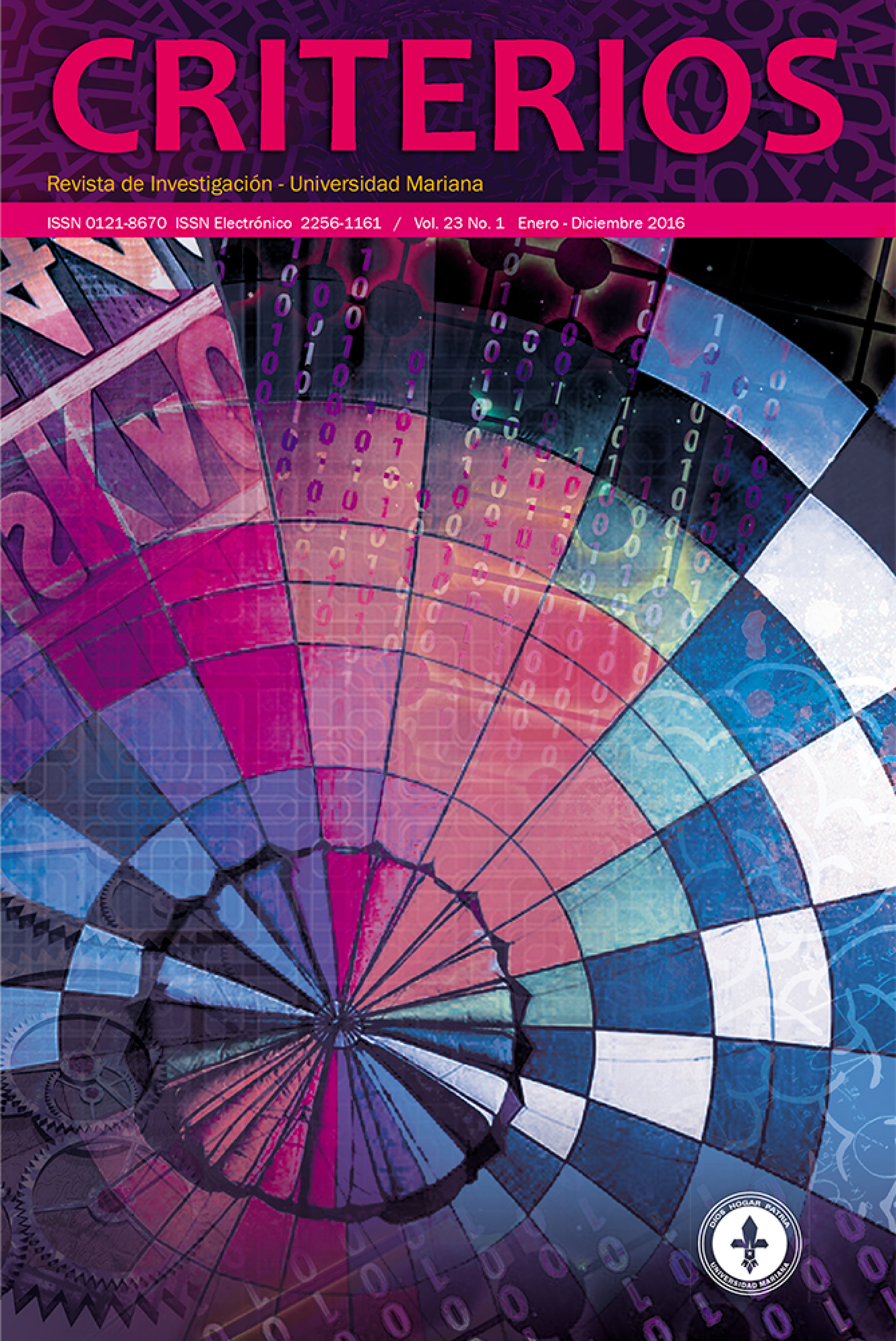Centers of interest: a different proposal for a different teaching
Keywords:
Centers of interest, teaching of English, didactic strategy, students of transitionAbstract
This article presents the results of the research: “Centers of interest as a didactic
strategy for the teaching of basic English vocabulary”, whose development
was methodologically framed by the qualitative paradigm, guided by the social
critical approach, and by research guidelines - Action (IA), with the purpose of
analyzing the interests of transition students of the Colegio Sagrado Corazón de
Jesús Bethlemitas - Pasto, in relation to the teaching of basic English vocabulary,
to implement the didactic strategy of Interest Centers.
Four specific objectives aimed at theorization, diagnosis, implementation and
proposal design were worked out, using bibliographical documentary revision,
expert interview, teacher survey. A diagnosis of interests was made to the
students to determine the Centers of Interest regarding the basic vocabulary
of English, with play workshops in the implementation of the strategy, in which
didactic units were planned using the didactic strategy Centers of Interest with
their stages of observation, association and expression. The systematization
was organized using the matrix technique and analyzed using the triangulation
technique. The main results of the research show that the Centers of Interest, as
a didactic strategy, favor the participation of the student in the different stages
of the teaching process, making real the approach of the current education
where the student is the center of the process, demonstrating, in this case,
effectiveness in the teaching of basic English vocabulary.
Author Biographies
María Fernanda Insuasty Cortés, C.E.M. La Victoria
Magíster en Pedagogía; Licenciada en Inglés – Francés. Docente C.E.M. La Victoria, Corregimiento de Catambuco, Nariño, Colombia.
Magaly del Rocío Paz Yanguatín, Instituto Colsup
Magíster en Pedagogía; Licenciada en educación preescolar. Coordinadora del programa de Primera
Infancia, Instituto Colsup; docente tiempo completo Instituto Colsup, San Juan de Pasto, Nariño, Colombia.
Isabel Hernández Arteag, Universidad Cooperativa de Colombia
Doctora en Ciencias de la Educación. Docente investigadora de la Escuela de Posgrados de la Universidad Cooperativa de Colombia sede Bogotá; docente y asesora de maestrías en el campo de la educación en el país.
References
Antón, C. P. (2008). Investigación de la teoría decrolyana: la vida como objeto de la educación. CEP Granada. Obtenido de https://es.calameo.com/read/00078066421c1f95fc68e
Carr, W. (1995). Una teoría para la educación. Madrid: Morata.
Chavez, J. L. (Junio de 2015). Entrevista sobre Estrategia Didáctica Centros de Interés. (F. P. Insuasty, Entrevistador)
Decroly, O. (1965). Iniciación General al Método Decroly. Buenos Aires: Losada.
Dewey, J. (1907). The school and Society. Chicago: Chicago University Press.
Lázaro, A. (2002). procedimientos y técnicas del diagnóstico en educación. Tendencias pedagógicas, 97 - 116.
Ludeña, E. (2011). Magisterio de Educación Primaria. Obtenido de http://tendenfanylu.blogspot.com/
Meza, R. (Junio de 2015). Entrevista sobre Estrategia Didáctica Centros de Interés. . (F. P. Insuasty, Entrevistador)
Monereo, C. P. (2007). Estrategiasde enseñanza aprendizaje: formación del profesorado y aplicación en la escuela. Mexico DF: GRAO.
Navarro, R. E. (17 de noviembre de 2014). El concepto de enseñanza aprendizaje. RED cientifica.
Ramos, C. (2001). La escuela por la vida y para la vida. Historia de la Educación Colombiana, 136-137.
Rodríguez, C. P. (2006). La triangulación analítica como recurso para la validación de estudios de encuesta recurrentes e investigaciones de réplica en educación superior. Revista Electtrónica de Investigación y Evaluación Educativa (RELIEVE), 12(2), 289 - 305.
Sandin, E. P. (2003). Tradiciones en la investigación cualitativa. En Investigación cualitativa en educación. Fundamentos y tradiciones. Madrid, España: Mc Graw and Hill Interamericana de España.
Torres, D. &. (2005). La estimulación del espíritu investigativo a partir de los Centros de Interés. (12). Pasto, Nariño, Colombia.
Valderrama, J. (2006). Los Centros de Interés como estategia pedagógica para favorecer el desarrollo del lenguaje oral y comprensivo de los niños y las niñas de preescolar de la institución educativa municipal Antonio Nariño. (12). Pasto, Colombia.
How to Cite
Downloads
Downloads
Published
Issue
Section
License
Copyright (c) 2019 Revista Criterios

This work is licensed under a Creative Commons Attribution 4.0 International License.
Revista Criterios es publicada por la Editorial UNIMAR de la Universidad Mariana bajo los términos de la licencia Creative Commons Reconocimiento 4.0 Internacional (CC BY 4.0)

Altmetric
| Article metrics | |
|---|---|
| Abstract views | |
| Galley vies | |
| PDF Views | |
| HTML views | |
| Other views | |




